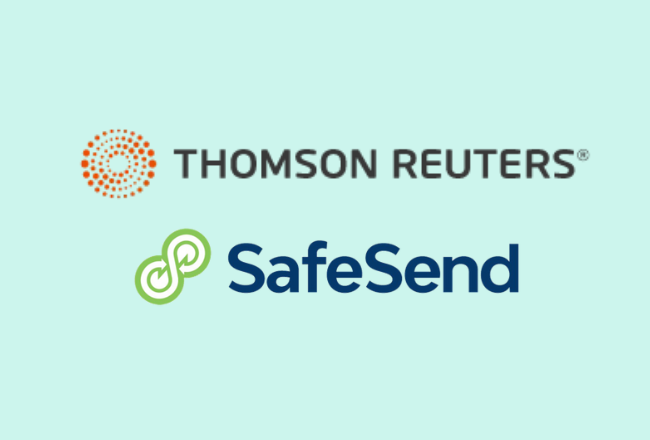
Tips to Remove Document Organization from Your List of Remote Work Headaches
Working on a remote team comes with enough headaches, from connection issues during virtual meetings to unresponsive colleagues, but managing documents shouldn’t be one of those headaches. Keeping documents organized in your business is crucial for effective collaboration and success, especially when it comes to dispersed teams. Staying organized may sound easy, but difficulties are prone to arise. We’ll discuss some best practices to help your team keep document organization off your list of remote work headaches.
- Invest in a Document Management System
A top priority for effective document organization is to invest in acloud-based document management system, a software that helps businesses securely store, organize, and share documents online. Authorized team members and customers – regardless of their locations – can access, edit, share, and collaborate on files. They just need a device with Internet connection.
A lot of businesses still store files on a local network device and rely on emails to share documents. For Office Service Solutions, Inc., this led to cybersecurity risks, misplaced files, and frustrated staff. Accounting Manager, Asher Please, decided to implement a DMS. "[Our DMS, SmartVault,] allows us to work remotely, if needed, without ever having to worry about not having the right file on the laptop…[and] cases of lost documents are massively reduced," he says.
Common functions of a document management system include “checking out” files for editing or annotating, providing version history and audit trails, automatically organizing files into correct folders, and sharing documents with outside parties. You’ll want one that comes with an integrated client portal that allows customers to view, edit, share, and collaborate on documents too. Document management systems are an excellent tool for keeping the documents your team handles organized. - Adopt a Hierarchical File System
Organizing documents within your online file storage software will streamline workflows across your team. There isn’t a “right” or “wrong” way to organize files, and companies will have different strategies that work best for their needs. Generally, good file management practice is organizing files in a hierarchical system where documents are initially sorted into top-level folders based on a primary characteristic, and each top-level folder subsequently contains additional sub-folders. The advantages of a hierarchical file system include an intuitive organization for team members to find what they are looking for easily and document security with the ability to limit access to specific sub-folders.
Let’s illustrate a hierarchical file system for an accounting tax practice that handles tax returns for individual taxpayers. The team may choose to initially organize files based on client names, assigning a unique identification number to each client for further distinction and identification. Each client folder is then further delineated by creating sub-folders for different projects or workflows pertaining to the client. For example, one sub-folder could store tax returns and another work papers. These sub-level folders can then be organized even further by tax year. Numerous options are available for hierarchical organization, and selecting the one that works best for your team will depend on your team’s specific needs and preferences. - Consistency is Key
People tend to like to do things in their own way. However, when it comes to organization, it’s imperative for the entire team to adhere to consistent guidelines. An area to focus on consistency is naming documents stored within your document management system. Few things are worse than opening a client’s file to find a list of unlabeled documents, necessitating the tedious task of opening each one to discern its contents. Naming files as they are received, or using a DMS that automatically does this for you, will save you and your team time when working on projects. Moreover, implementing a consistent method for naming specific file types will further enhance organization and help you parse what you have to complete a project and what you still need. - Cleanup Folders
Some clients will inevitably send a data dump of files containing unnecessary documents or duplicates. Storing and maintaining unnecessary documents can be burdensome for team organization. A best practice is removing unneeded documents from a client’s folder. This practice ensures that when other colleagues access the folder, only the files relevant to the project are present. A clean client folder, although a seemingly minor benefit, goes a long way in helping a project move along efficiently.
Using a DMS can help prevent this issue, too. You’ll want a DMS that has a document collection process, where you can send your customer(s) a list of exactly what you need. They’ll receive an email with the list and can then upload documents, ask questions, and mark things as inapplicable. And because it’s over the cloud, your customers can securely upload these documents whether they’re at home, the coffee shop, or out of town.
Make Files Organization Simple and Automated
Regardless of the practices you adopt, keeping your files organized is crucial for the success of any team. Searching for files or messaging colleagues to send them consumes valuable time and energy that team members can instead spend on tasks that add value to your clients.
Over 30,000 businesses use SmartVault to collect, store, collaborate on, and share documents 100% in the cloud. Regardless of if your team is remote or in-office, SmartVault can help you follow document organization best practices and increase effective collaboration across your team and clients alike.
To see a custom demo of how SmartVault can work for you, schedule time with us today.




